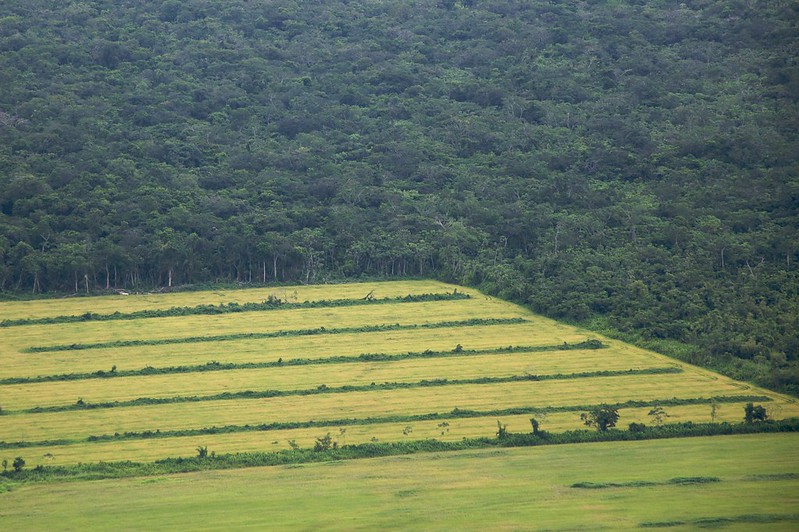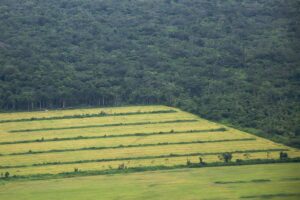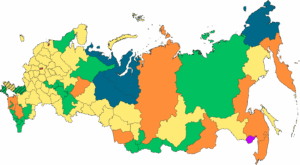By Michael Greene, Economic and Agricultural Correspondent
WASHINGTON D.C. – As the calendar turns toward November, a growing chorus of agricultural advocates is urging the Trump administration to adopt a bold, protectionist measure with a surprising dual benefit: imposing a massive 50% supplementary tariff on all Brazilian imports to halt the relentless expansion of cattle and soybean farming into the Amazon rainforest.
While President Trump’s trade policy is rooted in the “America First” principle of combating “unfair competition,” proponents argue that Amazonian deforestation provides Brazil with a cost advantage that directly undercuts American cattle ranchers and soybean farmers, making this an issue of pure economic fairness.
“This isn’t about climate change; this is about farming,” states one leading agricultural policy analyst, who asked not to be named due to the sensitivity of the issue. “Brazil’s continuous clearing of the Amazon and other native forests to create new pasture and soy fields is a non-monetary subsidy. It’s an expansion of land at the expense of global nature, giving their farmers an unfair, perpetually growing advantage over ours.”
The Unfair Competition: Cattle and Soy
The core of the argument rests on the escalating scale of land conversion in Brazil, a process overwhelmingly driven by agricultural expansion. Data from various monitoring groups indicates that deforestation in the Brazilian Amazon has been alarmingly high in recent years. While rates fluctuate, the average annual loss of forest is measured in millions of acres annually, a staggering portion of which is converted for extensive cattle ranching, which then often precedes soybean cultivation within 5 years.
- Cattle Ranching’s Role: According to analyses, cattle ranching is the single largest driver of Amazon deforestation, historically accounting for around 80% of all cleared land in the region. The initial clearing of forest is primarily for low-productivity cattle pasture.
- The Soybean Engine: The land is often grazed for several years to build up organic material before being converted to high-value soybean production. Brazil’s soybean acreage is reaching historic highs, and this expansion, whether direct or through pushing cattle onto new forest land, directly competes with U.S. soybean exports, and hurts US farmers.
This dynamic is particularly damaging to the U.S. soybean industry. Due to ongoing geopolitical factors, China, the world’s largest buyer of soybeans, has prioritized purchasing from Brazil, sometimes paying a premium. Brazil’s seemingly endless ability to increase supply by clearing more land exacerbates this competition, pushing down global prices and squeezing the margins of American producers already grappling with market instability.
A Tariff with Strict Conditions
The call for a 50% tariff is not merely punitive but conditional, aimed at forcing Brazil to legislate against the very practices that constitute “unfair competition.” Currently Brazil’s confusing and contradictory laws state in one law that no deforestation is allowed and in another law it states 50% of the land can be used. Proponents suggest the tariff should remain until Brazil enacts and rigorously enforces several specific federal-level laws:
- Permanent Forest Status: Legally designate all remaining non-agricultural forest land in Brazil as permanent forest, with limited exceptions for government-concessioned, regulated mineral extraction.
- Zero-Tolerance Enforcement: Implement federal legislation that imposes a minimum two-year jail term and automatic, permanent loss of property for any individual or entity caught engaging in illegal deforestation. All illegally cleared land must revert immediately to a protected government reserve.
- Restorative Justice: Require that any forest land cleared for legal activity, such as mining, must be offset by the replacement and protection of ten times the area of open or degraded land elsewhere in the Amazon.
“These measures don’t just protect the forest; they protect the market,” the analyst added. “By stopping the flow of cheap, newly cleared land into the global agriculture commodity markets, President Trump can truly put American farmers first by ensuring a level playing field.”
The argument plays directly into the administration’s stated focus on trade reciprocity and countering non-tariff barriers, reframing the Amazon’s destruction not as a foreign environmental problem, but as a critical U.S. economic and competitive disadvantage. With the COP BELEM 20205 climate conference approaching in November, the timing of such an announcement would provide maximum leverage to force Brazil’s hand, tying a major trade sanction directly to an end to environmentally destructive—and economically disruptive—agricultural expansion.





